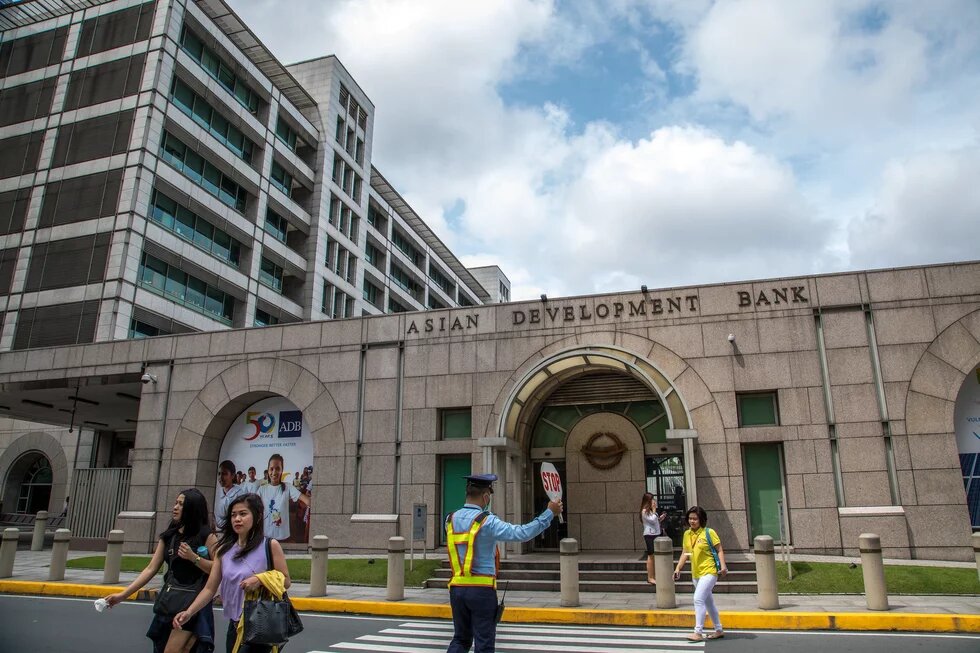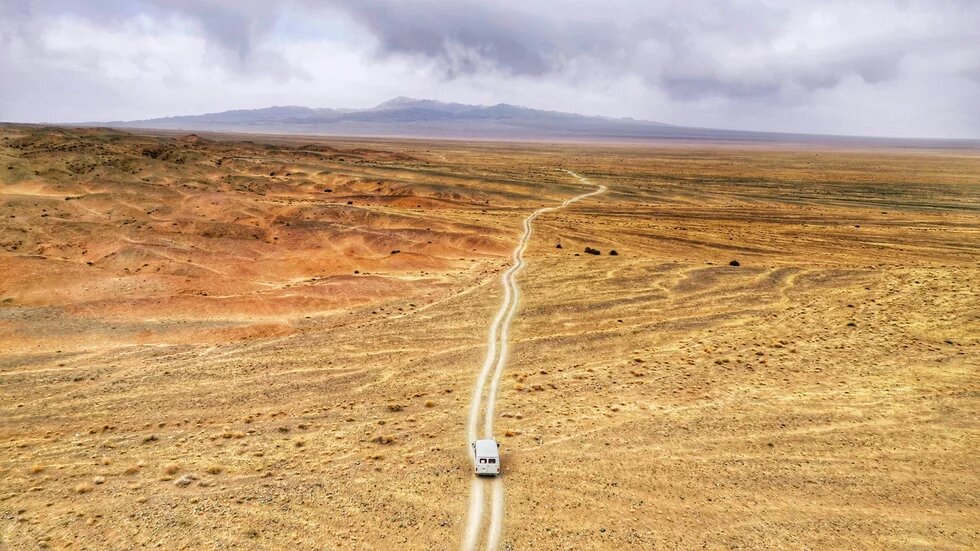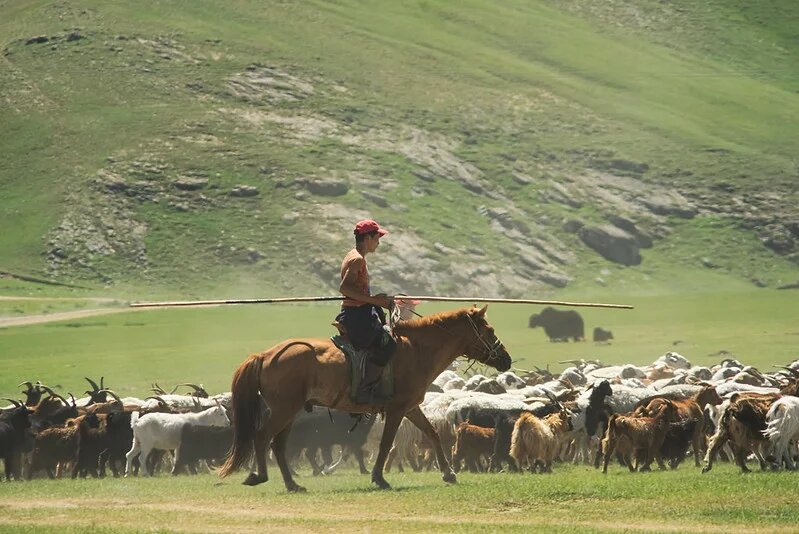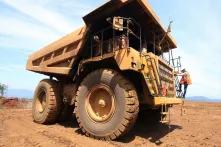
Climate-smart mining appears to be a better alternative to traditional mining, known for its destructive nature. By hyphenating ‘climate’ with smart mining, it is a repackaged tool to attract the mineral-rich but developing countries. Despite the benefits, the risks may outweigh them, particularly for the global South countries like Mongolia, where past mining ventures failed to deliver meaningful development to the majority of the population. This article sheds light on the true nature of climate-smart mining and explores why the World Bank and Asian Development Bank (ADB) are invested in this initiative.
This is one of the two related articles on transition minerals. The other article “Criticality and the Securitization of Southeast Asia’s Indigenous Mineral Resources” discusses the risks associated with framing critical minerals, particularly for Indigenous communities in Southeast Asia.

The World Bank and the Asian Development Bank (ADB) are enthusiastic about an industry that promises prosperity to poor nations while seemingly addressing the climate crisis: climate-smart mining.
Climate-smart mining will allow poor nations with rich reserves of energy transition minerals (ETMs) to grow their economy while retrofitting mining to climate standards i.e., using renewable energy instead of coal to power a mining operation. Climate-smart mining is the shiny wrapping paper repackaging the self-same Pandora’s box of mining risks.
Let the World Bank and the ADB not forget that the mineral and metallic mining industry, like the fossil fuel industry, has a heart of darkness. Changing its power source and giving it a new name does not strip it of its characteristic villainy. Mining’s environmental footprint is undeniable; open-pit mining in particular where landscapes are disfigured, and disturbs the delicate relationships in ecosystems. Mining significantly impacts biodiversity, including habitat fragmentation, loss of keystone species, and disruption of species reproduction, among others. Mining is a child of extractivism, which is primarily the export of large, unprocessed commodities - from minerals to crops.
While mining rehabilitation seeks to restore the land to its natural or economically usable state, such as repurposing it for agriculture, and ecological engineering is being peddled as a near-panacea, full ecological restoration remains difficult and often not cost-effective.
Climate-smart mining features
Climate-smart mining, as envisioned by the World Bank, and now embraced by the ADB, is anchored in four pillars. It includes afforestation, or establishing a forest in an area with no prior tree cover; carbon capture, utilization, and storage (CCUS), which has been criticized as a false solution to the climate crisis. Decarbonization consists of the above-mentioned shift to clean energy to power mining operations, but also of energy efficiency.
Resilience encompasses programs for physical capital such as building infrastructure to protect mining operations from climate impacts, and human capital, including skills training for operating in extreme weather events. Investment in social capital also falls under resilience. While there are real benefits to communities, it is clear that sustaining mining operations is the fulcrum on which resilience rests, when it should be sustaining communities.
Another pillar is the circular economy, which focuses on recycling minerals and repurposing end-of-life products (EOL), such as EV batteries. Waste from renewable energy infrastructure is projected to increase thirty-fold over the next decade. However, materials recovered from photovoltaics are reportedly 95% recyclable, while wind energy has a 90% recycling rate.
Finally, a key aspect of climate-smart mining is de-risking investments in ETMs, framed by the World Bank as “market opportunities.” The private sector has concerns about investing in developing countries with “weak governance and poor regulatory frameworks.” This aspect allows improved access to geodata enabling a more accurate identification of mineral reserves, helping to avoid sunk costs. The World Bank is willing to put its money where its mouth is, offering financial and risk mitigation products to de-risk these projected investments while influencing national government policies.
Lessons from Mongolia
Following in the footsteps of the World Bank, the ADB has adopted climate-smart mining for a technical assistance (TA) project in Mongolia titled “Climate-Smart Mining for a New Climate Economy.” Mongolia has large reserves of rare earth elements (REE) and copper. In the ADB’s project dossier, mining contributes to a quarter of the country’s gross domestic product (GDP), with its total mineral wealth estimated between $1 trillion and $3 trillion. The ADB’s technical assistance shall develop policy advice and mount investments for the exploration and processing of REE. The TA will also boost institutional capacity around environmental and social safeguards.
Crucially, the ADB classifies this project (mining for climate action) as climate finance, in line with the joint principles of multilateral development banks (MDBs). MDBs invoke climate finance for a host of initiatives, including carbon capture, waste-to-energy, hydrogen, and other such false solutions.
South Korea and the United States have signed agreements with Mongolia to tap into its transition minerals reserves, which include 31 million tons of REE, according to the US Geological Survey. The government of Mongolia is eager for the transition minerals economy to take off, and learn from its previous mining experiences, hounded by a myriad of issues, including allegations of corruption and strong community resistance.
Pundits caution that transition mining may replicate Mongolia’s struggle with the resource curse, where the extraction of abundant natural resources has failed to translate into inclusive development. In 2022, 27% of the Mongolia’s population lived below the poverty line.
A FORUM-ASIA research report uncovered startling impacts of mining on herder communities - shrinking pasture land, decreased incomes, community health issues, health problems in livestock, migration, reduction in water sources, human rights issues like threats, intimidation, and pressure, among others. In that report, a female herder’s plaintive question captures the tension between resource extraction and sustainability: “After the mines leave, we still have to stay. So, a few years of mining is threatening long generations of agricultural produce. How are we going to sustain?”
For the NGO Forum on the ADB, ADB’s TA to Mongolia “has the potential to exacerbate rights’ violations on the ground,” similar to the ones identified by the FORUM-ASIA report. With proof of concept as one of its outputs, the TA could eventually be templated for other ETM-rich countries in Asia such as Indonesia and the Philippines, where ADB has provided climate financing.
A bright spot in Mongolia is that at least the government has significant stakes in strategic mines, and a strong sense of resource nationalism seems to prevail. This is a feature of sensible extractivism prevalent in Latin America, where mining is often nationalized, and the state determines the trajectory of minerals extraction for well-articulated development aims.
Also, Mongolia has at least six international arbitration cases, showing its willingness to fight for its due. But the ADB and states such as the US are attempting to shift policy winds in Mongolia, including navigating the preferential access traditionally enjoyed by China and Russia because of existing infrastructure and proximity. Otherwise, as the US State Department has said, “investors will find Mongolia too risky.”
The economic impetus for climate-smart mining
Mining is a capital-intensive activity with a promise of a big pay-off. To frame climate-smart mining ostensibly as a market opportunity shows the World Bank’s and the ADB’s hand: transition mining is used as a tool for an economic model that, by looking at the stark income and wealth inequality it has created, has reneged on its assurance of trickle-down effect. (Climate-smart mining very much marches to the beat of the drum of mineral criticality discussed in the companion piece.)
Climate-smart mining without changing the economic model it serves, intensifies the use of the world’s finite resources. It does not interrogate the underlying modes of extraction of resources, and the production and consumption of commodities, which are driving the world over the precipice. More insidiously, these processes support an “imperial mode of living,” or the prosperity and creature comforts of the global North.
In fact, as with the extraction of resources, the extraction of transition minerals benefits the world, particularly the global North and the global elites, who are leading the transition - at the expense of the global South, and poor communities. A spatial analysis pinpoints that the majority of transition mineral deposits are located in global South countries, more specifically, on Indigenous ancestral and peasant lands.
This is a familiar refrain: the extraction of transition minerals, albeit supporting a noble aim, is not only extractivist but neocolonial. The global South is once again transmuted into what Vandana Shiva calls Terra Nullius - empty land, a place drained of people and context, to serve the interests of the global North.
To the credit of the World Bank and other institutions, the push for climate-smart mining aligns with the rhetoric of inclusive growth. The World Bank has now embraced the dictum of shared prosperity, pursuing growth while addressing income inequality as well as sustainability—an improvement on the myopia of pure economic growth. After all, the diagnosis of newly minted Nobel Prize winners Daron Acemoglu, James Robinson, and Simon Johnson is that poverty can be solved by inclusive institutions, as historical evidence has demonstrated.
But inclusive growth as the broader frame for transition mining, as with other development or industry blueprints, is woefully inadequate. Even sustainable development originating from the United Nations Bruntland Commission, is insufficient as argued by Jason Hickel, it prioritizes development over sustainability.
Something’s got to give.
The International Energy Agency has found that the shift to renewable energy is mineral intensive, more so, than fossil fuels. Mineral demand will triple by 2030 and quadruple by 2040 under a net zero scenario (NZE). A just energy transition requires a more nuanced approach to transition mining.
Indispensable extraction and post-humanism
The ADB has correctly stopped bankrolling new coal-fired projects, but this interest in climate-smart mining taints its commitment to climate action; however controversial some of its loan proceeds are. With climate-smart mining, the ADB is falling back into old habits. The woes of Mongolia should give the Bank pause before it ends up propping up an industry with a track record of irreversible harm.
What would be helpful for nations with rich deposits, like Mongolia, is the implementation of advanced protocols for responsible mineral management, such as those prescribed by the Initiative for Responsible Mining Assurance (IRMA) – provided the communities and government agree to mine. The IRMA Standard for Responsible Mining outlines a list of safeguards that promote environmental conservation and social protection. Since Mongolia has also signed up to the Extractives Industry Transparency Initiative (EITI) will help ensure that corporate disclosures are widely shared and, hopefully, that benefits flow back to communities. A corruption diagnostic tool was even piloted in Mongolia in 2021, as part of its membership to EITI.
Fundamentally, countries looking to harness transition mining should heed the principles of indispensable extraction, or necessary mining. Exploiting mineral reserves solely for export-driven corporatist profit-seeking is a function of predatory extractivism, which has resulted in environmental degradation.
In indispensable extraction, states locate the mining industry as an absolute necessity within their wider development plans, which ought to be anchored in regenerative development or regenerative economics. As such, a government takes stock of its mineral reserves vis-à-vis the health of its ecosystems, the integrity of its food systems, the livelihoods of its vulnerable peoples, the sacredness of Indigenous areas, and other such land, use parameters and perimeters. In other words, if mining were to be developed, it would secure social and planetary wellbeing.
Alternative to development paradigms such as Buen Vivir, ecological Swaraj, among others, reorient development away from mere sustainability to a more harmonious relationship with nature.
In the cosmology of Mongolia’s own nomadic herders, humans are custodians of the land, while spiritual deities govern landscapes. Practices such as “disturbing the earth, digging the land, unearthing the subsoil and extracting its minerals are viewed to anger them.” This relationship with nature and land de-centers human exceptionalism, signaling a post-humanism that radically revamps human relationships with ecosystems and the planet itself.
Climate-smart mining may offer some useful applications, but Indigenous cosmologies and ecological frameworks are an embarrassment of riches for distilling principles and programs for transition minerals as with a blueprint for regenerative development.
Instead of testing the waters with climate-smart mining, the ADB should marshal its extraordinary resources into genuine climate finance initiatives that don’t further endanger nature and people.
__
Maya Quirino is a non-profit worker based in the Philippines.
Disclaimer: This published work was prepared with the support of the Heinrich Böll Stiftung. The views and analysis contained in the work are those of the author and do not necessarily represent the views of the foundation. The author is responsible for any liability claims against copyright breaches of graphics, photograph, images, audio, and text used.



